Keep the Tail Wagging is supported by pet parents. I occasionally earn a commission (at no additional cost to you) when you click through an affiliate link to one of my favorite products. Thank you for your support. Read More
So, why exactly don't veterinarians support raw feeding for dogs? With all of the information that we've learned, combined with thousands of firsthand accounts from pet parents, I expected that the days of veterinarians taking a strong stance against raw feeding would be a thing of the past. Turns out that I'm wrong
Recently, I was stunned by responses to a social media post describing veterinarians actively trying to convince clients that raw feeding for dogs is unhealthy and unsafe, leaving people feeling like bad dog owners for choosing this “dangerous” diet. What????? Are people STILL spreading myths about raw feeding??? There was a commercial for raw dog food on network television. New brands are popping up every year. Raw feeding is no longer a fad; it's a legitimate and healthy choice for our dogs.
With everything we know and are learning about canine health and nutrition, I'm stunned that veterinarians still aren't convinced that raw feeding for dogs is an acceptable alternative to processed foods. I don't expect all vets to jump on board, but I'm stunned to learn that some are still passionately against raw feeding.
So, now I want to understand why.
Why Veterinarians Don't Support Raw Feeding for Dogs
I reached out to the veterinarian community to ask why they don't support raw for dogs, and three reasons bubbled to the top of this Query Soup:
- A raw food diet isn't balanced, and dogs who eat it risk nutrient deficiencies.
- The bacteria in raw meat is a danger to dogs and their humans.
- There are no scientific studies that support the nutritional benefits of a raw diet for dogs.
Now, I'm not a veterinarian, so I'm in no way suggesting that I'm more intelligent than the people who took time out of their day to share their thoughts with me. I do, however, somewhat disagree with the information I received, and I want to share why.
A Raw Food Diet isn't Balanced
This is an argument that is shared by people who are pro and anti-raw feeding, so I wasn't surprised to see this on the list. A couple of years ago, there was a small social media dust-up about balance, and I remember someone saying that if you can't feed raw correctly then you should just feed kibble. And lately, I've noticed people I respect sharing this same belief, and recommending working with a meal formulator if you want to feed raw. A popular veterinarian pushes us to question the belief in “balance over time:”
“Dogs eating homemade prey model diets fed by misguided pet parents who believe offering any type of fresh food is all that matters, recipes are unnecessary, and “balance will occur over time” without intentional additions to meet specific nutrient deficiencies.”
Dr. Karen Becker
So, what's my issue with this argument against raw feeding?
I don't believe that raw feeders (as a community) are feeding our dogs a nutrient-deficient diet. Before one assumes that I'm dropping the ball on my dogs' diet, I'd love it if they took the time to learn what I'm feeding my dogs, how I formulate their meals, and how I double-check my work. However, on the flip side, I'm confident that many well-meaning pet parents are doing the best they can, working from the belief that they're doing everything right, but they're missing the boat. And I used to be one of those well-meaning pet parents, sharing ridiculous recipes on this blog (all deleted) that I would never feed my dogs today. We're always learning.
How to Balance Your Raw Food Diet
If you're reading this and you're concerned that the diet that you've “formulated” for your dogs isn't meeting their nutritional needs, there are a few things you can do to correct their diet.
1 – Purchase recipes from a reputable source. Planet Paws offers balanced recipes for raw feeders for about $3 each. As long as you can source the ingredients in the recipe, then you can purchase a handful of recipes and feel more confident about your dog's diet.
2 – Hire someone to formulate a diet for your dog. Meal formulation services is a new-ish opportunity in the pet industry. If you don't know enough about creating a diet that meets your dog's nutritional needs and your veterinarian can't help, you can hire someone who formulates raw meals, including holistic veterinarians who offer this service. It's important to work with a reputable formulator, communicate any health concerns you have about your dog, and share what foods/ingredients you can and cannot source.
3 – Invest in meal formulation software. I purchased the Animal Diet Formulator in 2018, and the software has taught me a lot about the different foods I can add to my dogs' diet. It is an investment, but I've found that it's worth the cost because I have more confidence in my dogs' diet, and I can quickly formulate a meal only using ingredients that I can source locally. This allows me to formulate a diet that is nutritionally balanced and affordable.
4 – Feed commercial raw. Yep, commercial raw is far more expensive than DIY. Still, the reason it costs more is that someone else is formulating a nutritious diet, someone else is sourcing the ingredients, and in some cases, someone else is delivering the food to our door. When all else fails, find an affordable brand.
Bacteria in Raw Meat is Harmful to Dogs and Humans
The main reason that I do not support raw diets is that many people cannot follow instructions to keep them and their pets safe. If you leave raw meat out on the counter for a period of time, it can easily and quickly grow bacteria. This can cause your dog and you to be very sick. I have a few people who insist on feeding a raw diet to their pets and we have a very long conversation about what to expect if they do not keep their kitchen clean and keep their pets food cold.
~ Sarah Ochoa, DVM, small animal and exotic veterinarian in Texas and a veterinary consultant for doglab.com
This is an interesting argument, and whenever someone brings up bacteria in raw meat, I wonder if they have ever made a chicken or turkey dinner, prepped hamburger patties for the grill, or baked cookies from scratch. Or if they're aware of the number of romaine lettuce recalls due to salmonella we've had in America. Some dogs eat their stool, and kibble-fed dogs shed salmonella, too, so why are we so worried about bacteria for healthy dogs?
Bacteria is everywhere, and I've learned not to be afraid of it. Maybe this can be an issue if we don't keep our kitchen clean (I clean our kitchen daily) and if we don't keep our dogs' food cold (my dogs have two dedicated freezers and a fridge), but this isn't the reason I'm not afraid of bacteria.
1 – A dog's saliva kills bacteria. I'm not suggesting that we start harvesting our dogs' drool and using it instead of colloidal silver or prescribed antibiotics. I'm saying that this makes sense because wild dogs and their cousins/ancestors aren't dying from salmonella or e-Coli when eating their prey. In fact, my dogs snacked on a dead rabbit for several days before I caught on, and no one got sick. I'm not suggesting adding decomposing animals to the diet; I share this because it shows that a healthy dog is more resilient than we realize.
2 – Dogs have an acidic gut, which is typical of a carnivore and helps them to digest meat and bones. And that being the case, a dog's gut isn't a fun place for bacteria to set up camp and build a community. We have a dog with a history of digestive issues, and he was diagnosed with Exocrine Pancreatic Insufficiency (EPI) in 2019. Despite his compromised gut, he's handled raw meat and bones like a champ, and I believe it's because this is a species-appropriate diet, and I educated myself about how best to support his gut and immune system health on a raw diet.
3 – Dogs have a shorter digestive tract and food is processed quickly and efficiently and then turned into waste; decaying food isn't hanging out in a dog's gut. Of course, I'm not keen on feeding my dogs' raw meat sitting around on the counter all day or baking in the sun. But I do feel confident that the food I feed my dogs doesn't make them sick.
Still Worried About Bacteria?
If you're still concerned about bacteria, here are a few things you can do to reduce the risk:
1 – No kisses after mealtime. I have very affectionate dogs, and they all love to give me kisses. I love receiving their affection. But if my dogs just ate a raw meal, I'm not keen on doggy kisses. My dogs don't seem to be either, so it works out in our house.
2 – Thaw raw in the fridge. Yeah, it's a pain in the butt because it takes forever (about 5 days for me), but once you get a good system going, then you'll know when to start the thawing process. If you're in a hurry, you can thaw in cool water (never hot water) for a few hours before putting the meat in the fridge to continue.
3 – Store raw in the correct sized containers. I have four big dogs, so using the larger containers to store raw work for us. Each container holds two days of food. However, there are times when Rodrigo eats something different due to his protein sensitivities. When I'm making his food, I use smaller containers. The dogs finish a food container before bacteria becomes an issue and the meat spoils.
4 – Feed home-cooked instead of raw. Some believe that cooking kills all of the nutrients – Ummm, that doesn't make much sense; how do we explain humans? And I say this as someone who used to say often “cooking kills all of the nutrients.” Excuse me while I roll my eyes at myself. You can always cook meals for your dogs if bacteria is a concern. Planet Paws also offers balanced cooked recipes.
No Studies Support the Benefits of Raw Feeding
Nope, no definitive studies support the anecdotal evidence that thousands of raw feeders can provide. But I'd love to know more about the independent studies supporting the benefits of a kibble diet for dogs. I'm not referring to AAFCO feeding trials; I'm curious about actual studies that follow a lot of dogs over an extended period.
Veterinarians are scientists, and I respect the desire to read a study. But isn't observation a part of scientific discoveries? I don't expect veterinarians to take time out of their busy schedules to interview raw feeders worldwide, but what if they contacted one person? Thomas Sandberg of The Long Living Pets Research Project is tracking the health and longevity of raw fed dogs. He's been observing raw fed dogs for years. And what about holistic veterinarians who do support raw feeding; wouldn't a conversation inquiring about their experience with raw-fed patients be informative?
While this makes sense to me, a dog mom and blogger, I can understand why it doesn't make sense to a veterinarian. How many veterinarians have the time to explore the pros and cons of raw feeding if everything shows them that it isn't safe for dogs?
I have seen no scientific evidence supporting the idea that feeding a raw diet provides superior nutrition to pets in comparison to a diet made from the same ingredients that have been appropriately cooked. For example, a diet centered around chicken breast would provide essentially the same nutrients whether the chicken was raw or cooked to the recommended internal temperature of 165 degrees Fahrenheit. In fact, cooking makes some nutrients more available to pets than they are in the food’s raw form.
~ Jennifer Coates, DVM, serves on the advisory board for Pet Life Today
Studies that Mention the Benefits of Fresh Food for Dogs
The following are studies I've encountered in my years as a raw feeder. While these aren't about whether raw diets provide superior nutrition to cooked or processed diets, I think this is a start.
Relation Between the Domestic Dogs' Well Being and Life Expectancy – 2003 study conducted by Lippert and Sapy studied 500 dogs over a 5 year period. This study isn't specifically about raw feeding but mentions feeding a home-prepared diet “based on similar food as the family.” To me, this means a cooked diet, but I still believe that feeding fresh food is beneficial and extends a dog's life.
Urinary Bladder Cancer in Dogs, a Naturally Occurring Model for Cancer Biology and Drug Development – 2005 study conducted at Purdue University on Scottish Terriers – this study is about bladder cancer and in the study, as highlighted below, is the statement that “vegetable consumption has been reported to reduce the risk of TCC in Scottish terriers who have a strong breed-associated risk for the disease.”
2016 New Zealand dog diet study a wake-up call for dog nutrition – in this study, they find that dogs shouldn't be fed a high carb diet and do well on a diet that is higher in protein and fat.
“Up until now science has looked at studies on nutrient digestion in human, mice and rats and assumed the same is true for dogs in terms of digestion and what is good and bad bacteria in the gut. This study shows this may not [be] the case and much more needs to be done to understand the digestive system of dogs and the long-term health consequences of feeding different diets.”
2017 Dog Risk (Helsinki) Study: Raw Meat-Based Diets in Dogs and Cats
“Zoonotic meat-borne bacteria—such as Campylobacter, Salmonella, and enteropathogenic Yersinia—were only sporadically detected in RMBDs by PCR. These pathogens were not found by culturing, indicating a low contamination level in frozen commercial RMBDs produced in Finland. C. upsaliensis was a common finding in dogs irrespective of feeding RMBDs or dry pellets. Salmonella and enteropathogenic Yersinia were detected only in dogs fed RMBDs; however, the infection source and transmission routes remained unclear. Y. enterocolitica bioserotype 4/O:3 and Salmonella were probably transmitted from contaminated RMBDs to the indoor cats but not C. helveticus. However, the indoor cats shed C. helveticus in their feces for months. The practice of feeding raw meat to dogs and cats may increase the potential transmission risk of meat-borne pathogens to people. Pet owners, especially individuals at increased risk for infectious diseases (small children, old people, and immunocompromised individuals), should be aware of the safety risks of feeding RMBDs. Attention should particularly be paid to storage and handling of raw meat. RMBDs should be kept frozen until use.“
Other Arguments Against Raw Feeding for Dogs
There are many more arguments against feeding a raw food diet. I'm not an expert or a veterinarian, so my responses to these arguments are opinions based on my experience as a raw feeder.
1 – Dogs are Omnivores, not Carnivores
It's hard to accept that dogs are omnivores when I look at their teeth; they're made for ripping and tearing into meat and crunching bones, something a horse or cow wouldn't do. Their digestive system is perfect for digesting a high protein diet and bones. The fact that many dogs eat a processed diet of dry dog food doesn't change the fact that they are carnivores.
2 – Dogs Have Adapted to Eating Dry Dog Food and High Carb Diets
I'd love to see the studies that prove dogs should be fed a high-carb diet. From my own experience, a high-carb diet leads to weight gain, inflammation, dental disease, and other health issues. If dogs were adapted to processed diets, then why are we seeing shorter lifespans and more health issues?
3 – Dogs will Contract Parasites from Eating Raw Dog Food
I once had a veterinarian tell me that I needed to have my dogs' feces tested for parasites if I was going to feed them a raw food diet. They didn't ask what I was feeding or where I was sourcing the foods. The food that my dogs eat is primarily human-grade; I say “primarily” because ground meat with bone and green tripe aren't human-grade. I don't feed wild animals, and my dogs have never had parasites.
4 – Feeding Dogs Raw Meat Will Make them Aggressive
This is my favorite because it's what my mom warned me about when I explained what I feed to my dogs. All that blood will make them feral. Ummmm, no. My dogs are not aggressive or bloodthirsty. However, when Rodrigo was on a kibble diet, we did witness aggression in him that I attribute to inflammation and gut issues. Who isn't cranky when in constant pain or constantly feeling unwell?
5 – I Need to be a Canine Nutritionist to Feed a Raw Diet to My Dogs
We don't need to become certified canine nutritionists to feed a raw food diet. However, it doesn't hurt to take the time to educate ourselves on how to feed a nutritious diet to our dogs. Thankfully, there are plenty of people who offer formulation services. I think having meals formulated is a great idea, especially when you're starting. DIY raw feeding is much more affordable, and having a few “balanced” recipes makes the transition easier.
6- Feeding Raw Dog Food is Expensive
This one is subjective because it truly depends on your personal budget and the sources you have available in your area. I'm blessed to live in a rural city. I belong to a raw food co-op, and I get free organs from friends who raise their meat. So, to me, raw feeding is inexpensive. However, the numbers can add up if someone only has their local grocery store, pet store, and commercial raw as a source. On top of that, some of the tools we use are expensive – knives, meat grinders, additional freezers, etc. I wrote a blog post sharing 30 ways that I found to save money on raw, which can give people some ideas.
7 – Feeding Raw Dog Food is Time Consuming and Inconvenient
This one is subjective, too. Raw feeding can be time-consuming and inconvenient if someone has a big family, a ton of dogs, and little time. Personally, I found learning how to feed my dogs a nutritious diet to be the biggest time-suck, but it's been worth it too. Settling into a meal prep routine and finding the right tools (knives and meat grinder) made it easier for me and I went from spending a full day making meals, to spending an hour or two.
8 – DIY Cooked Diets are Better than Raw Food Diets
If bacteria or a compromised immune system are concerns, then a DIY cooked diet may be better than a raw food diet. But I'm not sure if I agree that cooked diets are inherently better than raw; it all really depends on the dog. Plus, a cooked diet can be nutrient deficient, too. I think both cooked and raw are beneficial to our pets; we just need to figure out what works best for our dogs.
9 – Dogs Need Grains in Their Diet
This is the newest argument for me; people think dogs need grains to avoid DCM (dilated cardiomyopathy). I don't think grains will protect our dogs from DCM. As I understand it, grains were blamed for sensitivities, allergies, and digestive issues in dogs so, to appease a customer base that wanted a grain-free diet, kibble companies dumped the grains and added legumes. Instead of increasing the animal protein, they chose to add plant-based protein – which offers different amino acids. Ultimately, the lower level of amino acids and the anti-nutrients (legumes) that blocked taurine absorption led to DCM in some dogs. A diagnosis of DCM isn't always due to diet. To avoid heart disease with my dogs, I add a heart supplement, fermented fish stock, and healthy animal-based proteins to their diet.
What Do We Do When a Veterinarian Doesn't Support Raw?
I've been lucky because even veterinarians who didn't support Raw were open to how I feed my dogs because they saw that I was doing my homework to learn how to meet my dogs' nutritional needs. Personally, I need to be 100% transparent with our veterinarian because they need all the information to treat my dogs. So, in the past, when I took a dog in to see a veterinarian who didn't support raw, I made a point of sharing the following:
1 – I understand the risks and share what I do to reduce those risks. For instance, I don't leave raw meat sitting out all day. I monitor my dogs when they have bones. I grind bones to make them easier/safer to eat.
2 – I feed a nutritious diet. I share information about the software I use to formulate my dogs' diet, where I source my food and the results of nutrient tests.
3 – I'm constantly learning. Although I've been feeding raw food to my dogs for more than seven years, this is still a learning process, and I am constantly seeking to educate myself and improve their diet.
In my experience, this satisfies the veterinarian's concerns; they've taken it further and offered helpful suggestions.






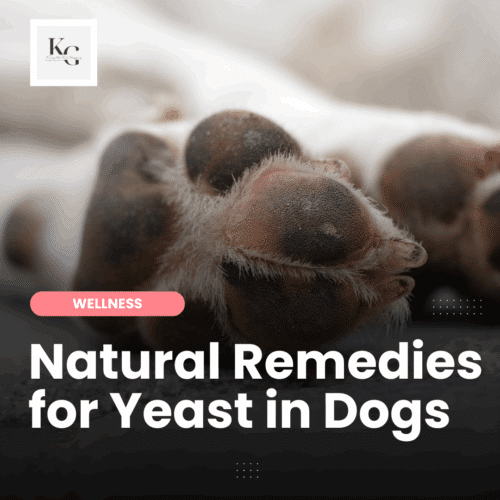
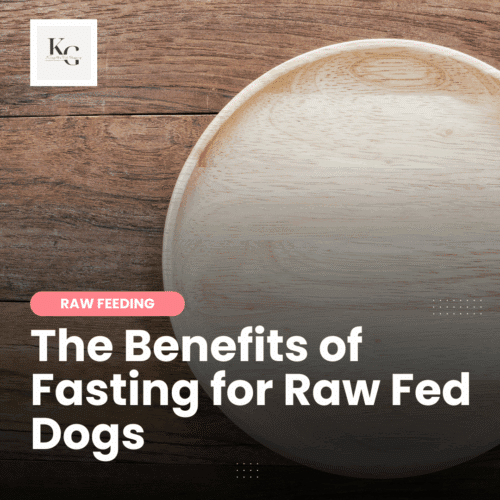
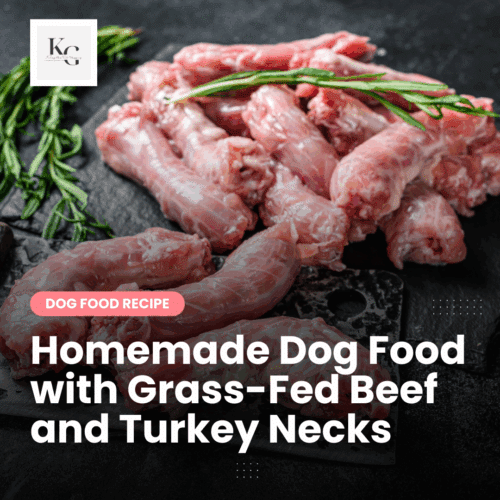
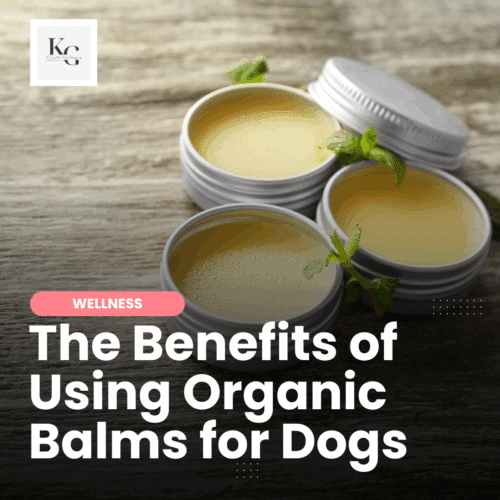

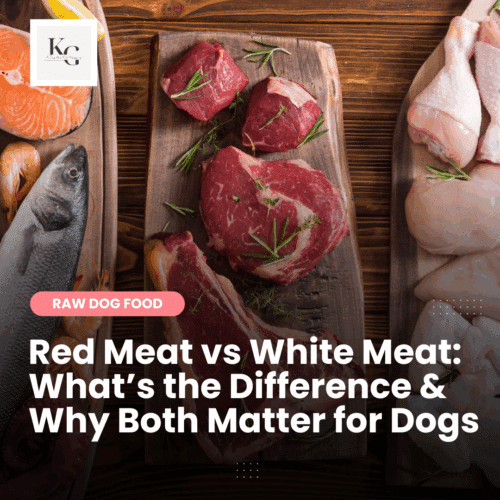
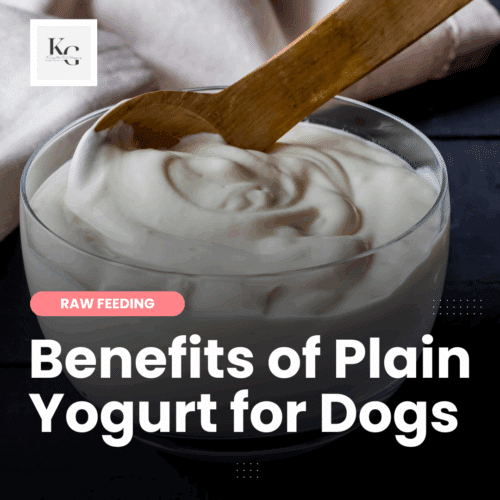


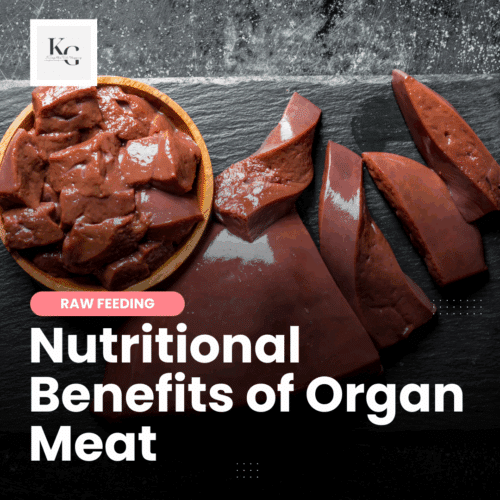


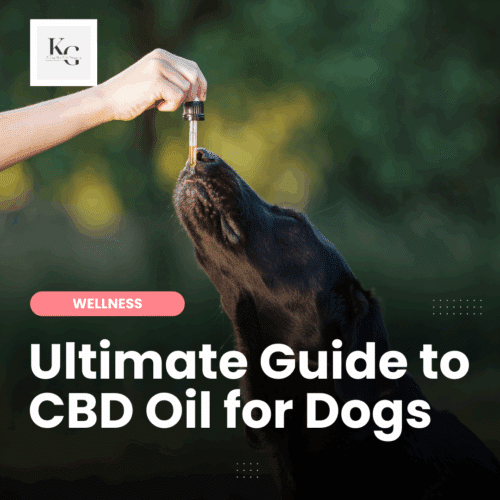
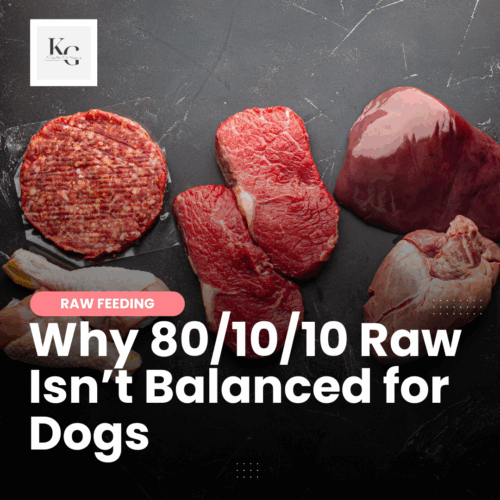
Right? It’s weird that any medical professional would support processed foods over fresh food.
I care only that dogs get real food, whether gently cooked or raw. As a registered dietitian it is shocking to me that any healthcare provider would recommend ultraprocessed good like substance over fresh unprocessed food.. That would negate everything we know about nutrition. It’s all about real food.